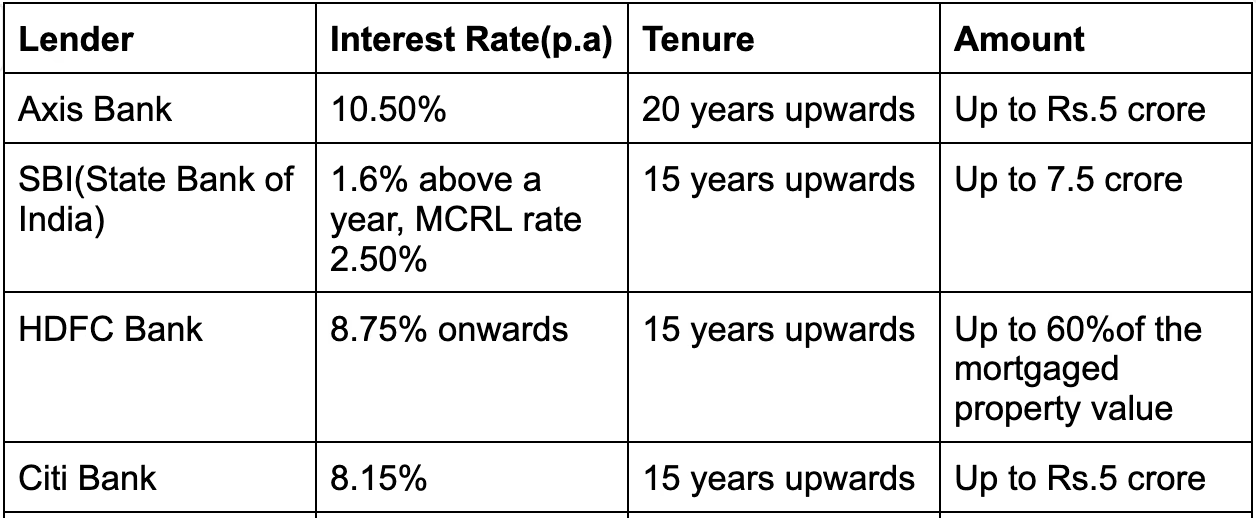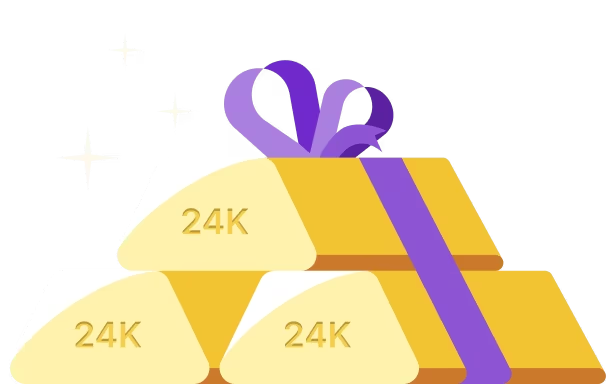In the current market, various debt products offer convenient financing for different needs like medical emergencies or education expenses.
However, understanding loan options is crucial before you make a decision. In this article, we will focus on the different types of mortgages in India, you should know.
What is a Mortgage Loan?
A mortgage loan involves borrowing against a property you own, whether a house, shop or non-agricultural land.
These loans, provided by banks or non-banking finance companies, offer a principal amount with interest, repayable in monthly installments. The property remains with the lender as collateral until the loan is fully repaid.
The lender has a legal claim over the property during this time, which allows them to seize and auction it if payments are not met.
How do Mortgages Operate?
Individuals and businesses utilize mortgages to acquire real estate without paying the entire purchase upfront. The borrower gradually repays the loan along with interest over a specified period, eventually gaining full ownership of the property.
Standard mortgage durations are 30 or 15 years. Various kinds of mortgages exist, including fixed-rate and adjustable-rate mortgages.
Types of Mortgages
In India, there are diverse types of mortgage loans tailored to the country's financial system.
Let's see the six types of mortgages;
Loan Against Property (LAP)
This is a type of mortgage in India that caters to various needs. It applies to commercial and residential properties.
Borrowers pledge their property to lending institutions to secure funds. The lender retains the property documents until the loan is fully repaid.
Banks calculate Equated Monthly Installments (EMIs) for property loans on their websites for convenient repayment.
The typical tenure for these loans can extend up to fifteen years.
Pros:
- Lower interest rates with property as collateral, allowing larger loans.
- Property remains usable, even for generating rental income.
- Tax benefits
Cons:
- Disbursement amount linked to the credit profile.
- Long processing time
Commercial Purchase
Business people and entrepreneurs often purchase commercial loans to acquire properties like shops, office spaces, and commercial complexes.
This type of mortgage loan is specifically designed for such transactions, ensuring that the funds are utilized solely for property acquisition.
Pros
- Easy access to funds
- Tax benefits
Cons
- Loan amounts depend on property value, potentially causing a funding gap.
- Fixed monthly repayments are needed, regardless of business cash flow.
Lease Rental Discounting
Among various types of mortgages, lease rental discounting is a common practice. Rent payments are transformed into EMIs, determining the overall loan amount.
Financial institutions, including banks and NBFCs, closely consider the lease agreement terms when offering these mortgage loans.
Second Mortgage Loan Types
Banks and NBFCs offer different mortgage loans, such as second mortgage loans, catering to properties already under a mortgage.
If you have a property loan, you can explore additional types of mortgage loans, like a second mortgage, on the same property for personal needs.
Reverse Mortgage
This was introduced in 2007 to support elderly homeowners in India.
When senior citizens need liquid cash, they can borrow from a bank, use their property as a mortgage, and receive the amount in monthly installments.
Home Loan Types
Home loans represent the most common type of mortgage in India. These mortgage types allow homeowners to renovate, refurbish, and rebuild their houses. Home loans can be used for purchasing land to construct a house or buying an under-construction property.
Pros:
- Additional tax and first-time buyer benefit
- No prepayment penalty on floating-rate loans
- Easily accessible with proper documents and eligibility.
Cons:
- Long-term commitment; missed EMIs can risk house auction.
- Uncertain property value increases may lead to interest surpassing property value.
Other notable types of Mortgages are;
Fixed-rate mortgage loans
These loans are a part of the different types of mortgage loans available in India.
They are provided to borrowers at a consistent interest rate, giving them a clear understanding of their loan commitment before borrowing.
Simple Interest mortgage loans
This is a type of mortgage where your daily interest is derived by dividing the interest rate by 365 days and multiplying it by your outstanding mortgage balance. To cover your monthly interest, you multiply this value by the days in the month.
English mortgage
Within various kinds of mortgages, the English mortgage stands out as a loan arrangement where the borrower commits to transferring their property to the lender if the loan remains unpaid beyond a specific date.
Note that this transfer isn't permanent; upon the borrower's full repayment, the property reverts to its ownership.
Usufructuary mortgage loan
This unique type of mortgage, commonly seen in rural India, involves granting the lender the right to use and benefit from the property during the loan period.
In usufructuary mortgages, the lender holds the property temporarily without borrower responsibilities.
Variable Mortgage loan
This type of mortgage is also known as a floating-rate mortgage which your monthly payments vary based on the repo rate set by the Reserve Bank of India.
The interest rate depends on the economy and stock market in this mortgage.
An adjustable-rate mortgage loan
This type of mortgage often offers easier qualification and installment. The initial interest rate remains fixed, subsequently adapting to economic fluctuations.
Mortgage by conditional sale
In this type of mortgage, the property is sold to the lender with the condition that the sale becomes final if there's a repayment default. If fully repaid, the property is returned to the borrower.
Average Interest Rates
Examples of some types of mortgage in banking are below

Steps in Comparing Mortgages
When comparing the different types of mortgages in India, consider these steps:
1. Interest Rates: Compare the interest rates offered by different lenders.
2. Loan Tenure: Compare various tenure options and choose what suits you best.
3. Processing fees: Check for processing fees, administrative charges, and hidden fees.
4. Prepayment and Foreclosure: Understand the terms and charges for prepaying or foreclosing the loan.
5. EMI Amount and Affordability: Calculate the Equated Monthly Installment (EMI) for each loan option and ensure it fits your monthly budget without straining your finances.
6. Loan to Value (LTV) Ratio:
The LTV ratio determines how much of the property's value the lender is willing to finance. A lower LTV might mean a higher down payment.
7. Fixed vs. Floating Rates:
Decide whether you prefer a fixed interest rate throughout the loan term or a floating rate that can change with market fluctuations.
8. Loan Comparison Tools: Use online mortgage comparison tools to input loan details and get an overview of different offers.
9. Loan Eligibility and Documentation: Understand the eligibility criteria and required documents for each lender.
10. Customer Reviews and Reputation: Research the lender's reputation and customer reviews.
Why People Use Mortgage loans
Below are reasons why people in India often use mortgage loans:
1. Affordability: Property prices in India can be high, and mortgage loans enable individuals to buy homes by paying a fraction of the property's value upfront and spreading the remaining cost over a more extended period.
2. Home Ownership: Mortgage loans make home ownership achievable, allowing people to build a property while gradually repaying the loan.
3. Tax Benefits:In India, mortgage payments offer tax benefits on both principal and interest, lowering tax liability.
4. Investment:Real estate is a long-term investment; mortgages are used to acquire property expecting its value to rise.
5. Liquidity Management: Mortgage loans allows people to purchase property without using all savings, keeping liquidity for emergencies or other investments.
How can one get it?
You have numerous choices for obtaining a mortgage, including credit unions, banks, dedicated mortgage lenders, online-only lenders, or mortgage brokers.
Regardless of your chosen avenue, compare rates among these options to secure the best possible deal.
Mortgages are available in various formats. The primary ones are 30-year and 15-year fixed-rate mortgages. Terms can range from as brief as five years to extending over 40 years.
In India, mortgages come in two types: registered and non-registered.
Registered mortgages involve officially registering the agreement deed, giving lenders property control. This is the preferred type of mortgage in banking in India, as it allows direct property actions for loan recovery.
Non-registered mortgages omit registration. Borrowers submit property documents for approval and disbursement.
Conclusion
There are various types of mortgage loans available in India, each catering to distinct needs. These loan types differ in eligibility criteria, characteristics, and advantages. It's crucial to comprehend these distinctions to determine the best-fitting option. Therefore, conduct thorough research before making your loan choice.










